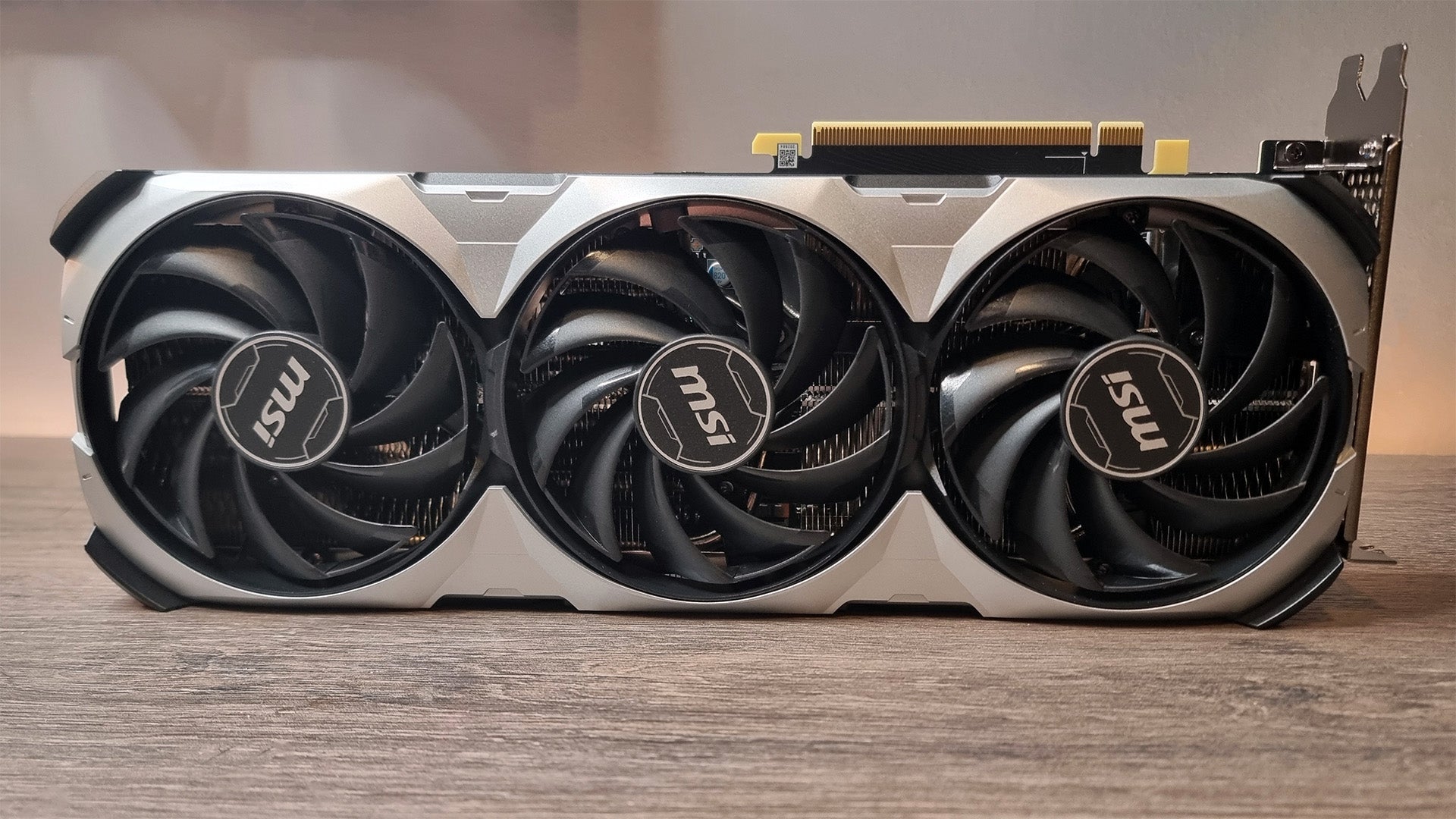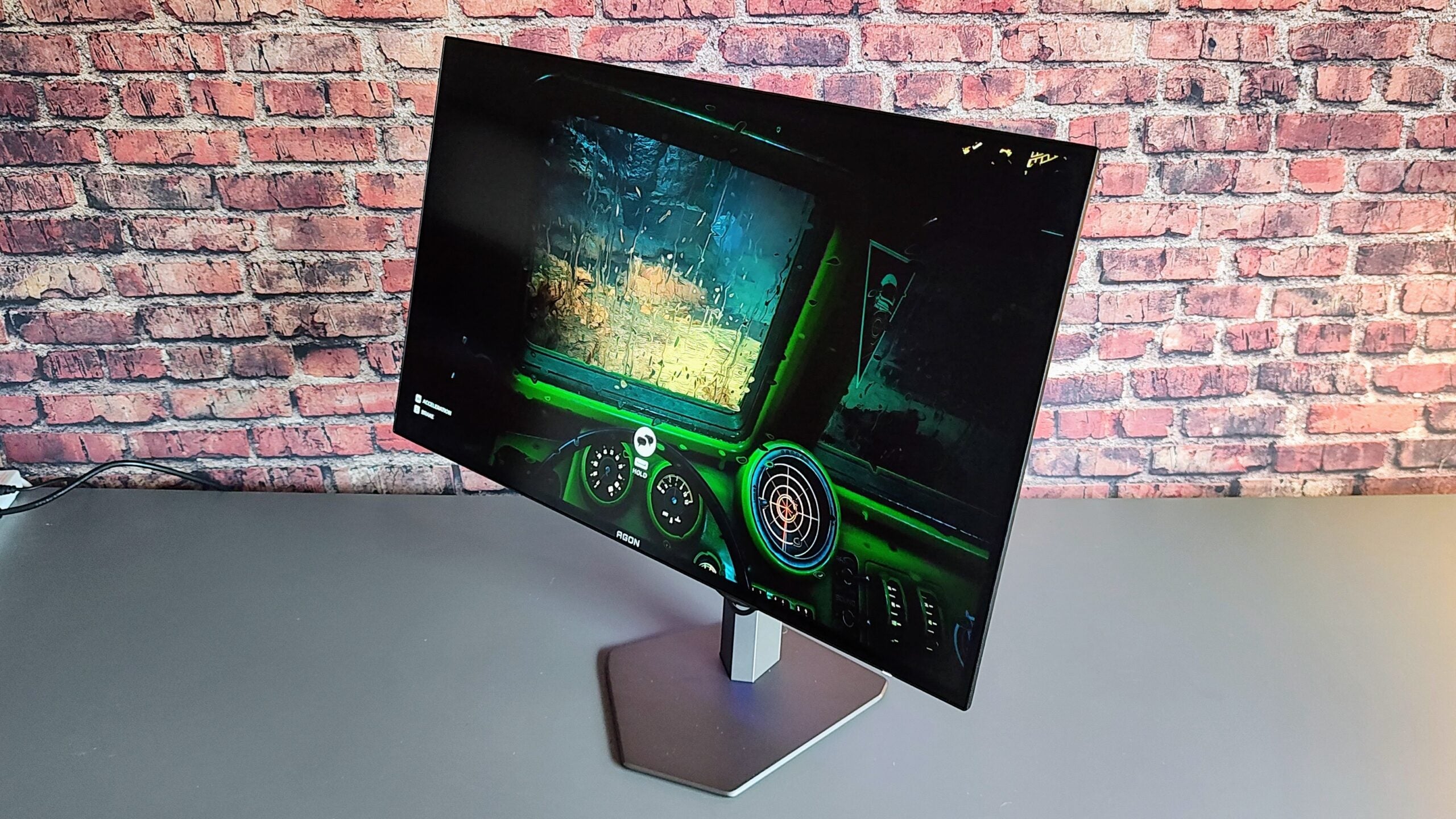Dell XPS 13 OLED (2021) Review
The best ultrabook just got even better
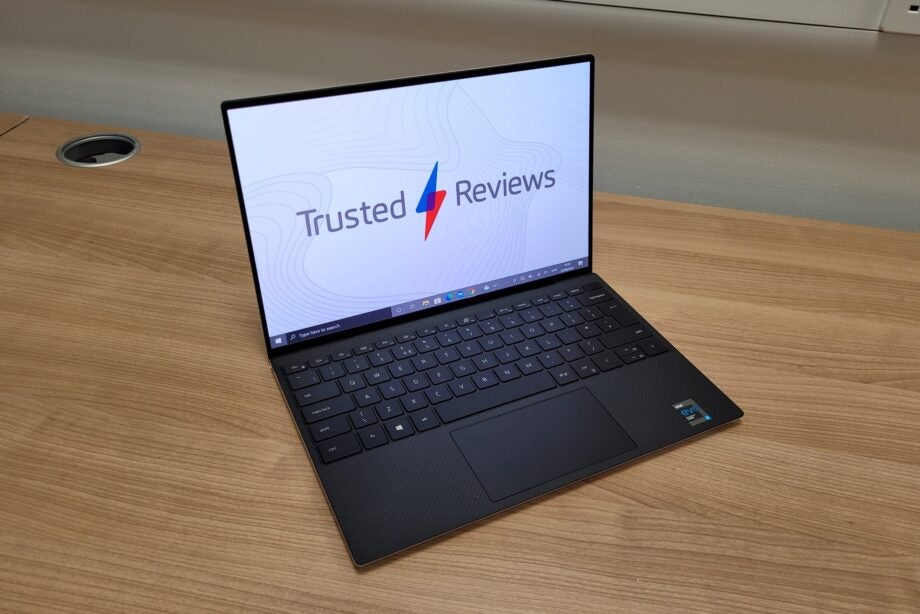
Verdict
The Dell XPS 13 OLED is one of the best laptops I’ve ever reviewed, with the jaw-dropping OLED screen proving a fantastic option for Netflix fans and content creators. But be mindful of the battery life, which falls short of the majority of ultrabooks.
Pros
- The absolute best laptop screen for the price
- Speedy productivity performance
- Class-leading laptop design
- Lots of configuration options
Cons
- Short battery life
- Stingy port offering
Availability
- UKRRP: £1348.99
- USARRP: $1549.99
Key Features
- 3.5K OLED display: One of the best screens you’ll find on a laptop, with superb contrast and colour accuracy.
- 11th Gen Intel processor: With Intel’s latest chips, this laptop can blaze through day-to-day tasks with ease.
- Ultra-portable design:With a skinny frame and 1.27 kg build, this is an idea design for on-the-go use.
Introduction
Dell already had the bragging rights to the very best laptop in the market, yet the Dell XPS 13 OLED raises the bar even higher with a jaw-dropping OLED screen.
Upgrading to an OLED screen has boosted the laptop’s contrast, brightness and colour accuracy, resulting in substantially better picture quality. If you watch the likes of Netflix on your laptop, the improvements will be immediately obvious.
But as Switch OLED pessimists may tell you, just adding an OLED screen looks like a minor upgrade on paper. Unlike Nintendo’s portable, it’s genuinely difficult to see what else Dell could have improved. The XPS 13 OLED features an 11th Gen Intel Core processor, a gorgeous lightweight design and a surprisingly affordable price (from £1249), considering the spec sheet.
With the fantastic new addition of an OLED panel, Dell has further strengthened its lead over the competition, even compared to the revolutionary MacBook Air M1. This is one of the best laptops ever made, but is it the right choice for you?
Design
- Edge-to-edge screen still looks incredible
- Very skinny and lightweight build is great for portability
- Lack of USB-A port makes you reliant on adaptors
The Dell XPS 13 has been the benchmark for laptop design for the past few years now. The wafer-thin bezel gives the laptop a stylish look, while also affording more space for the screen. Laptops with a chunky bezel, such as the MacBook Air M1, look woefully outdated by comparison.
The patterned interior deck, made of carbon fibre, adds some extra flair to the laptop. This nicely contrasts the silver aluminium casing, which you can see on both the lid and the trim that features all of the ports. By using aluminium, the Dell XPS 13 has a sturdier build than the magnesium LG Gram 16 or the plastic Chromebooks. That said, the XPS 13 still has a slight flex in the deck when you push down on the keyboard so it’s not perfect in this regard.
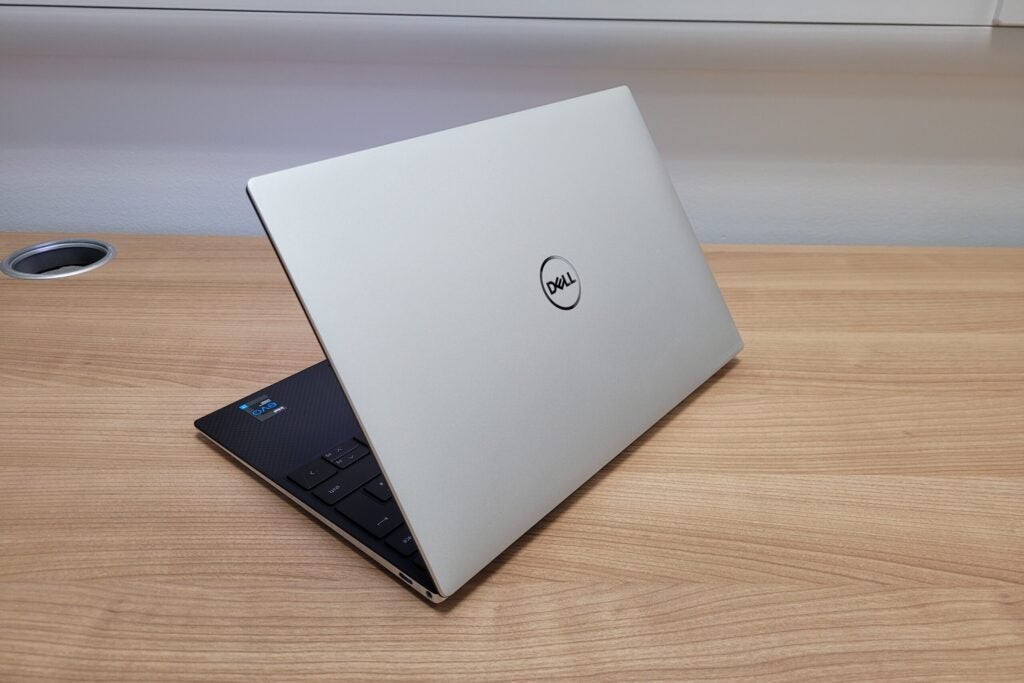
The XPS 13 OLED is a very thin laptop, with Dell claiming it measures just 14.8mm. This also results in an impressively light build, weighing a dainty 1.27kg. You can find cheaper laptops that weigh even less – such as the Acer Swift 5 – but they won’t feel or look as premium as the XPS 13 laptop does.
But there is a big drawback to being so skinny as Dell has been unable to fit some of the usual port options on the XPS 13. You get 2x Thunderbolt 4, a MicroSD card reader and a headphone jack but that’s it.
It’s a poor offering, especially since Dell hasn’t been unable to fit a USB-A port onboard, which is required for flash drives and peripherals. Dell does at least include a USB-C to USB-A adapter in the box, but using an adapter is still an undeniable faff that can be avoided with other laptops.
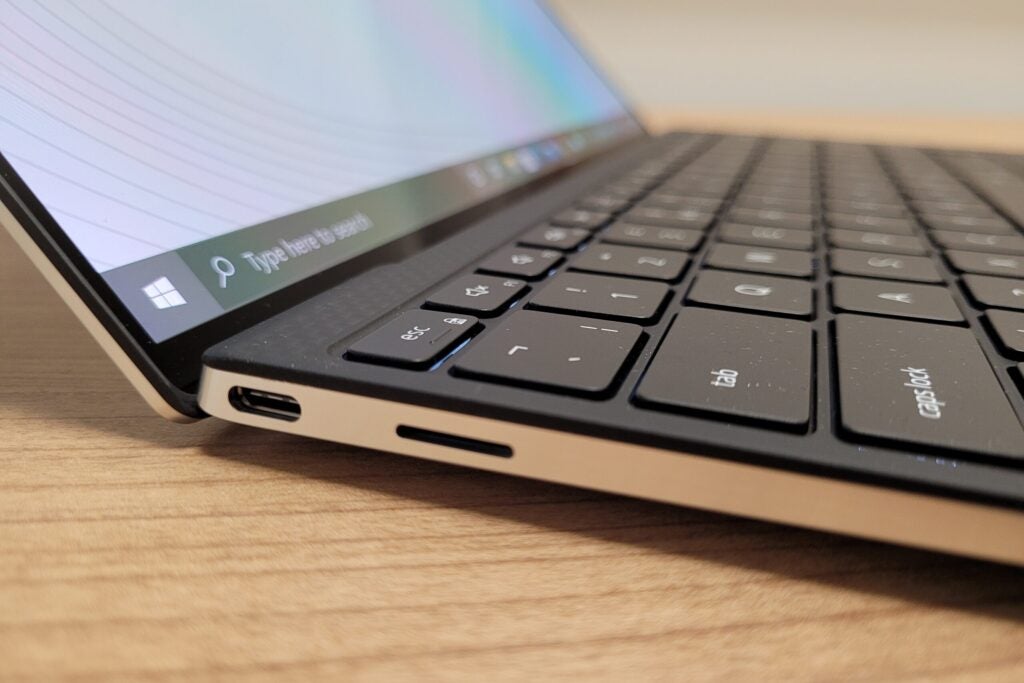
I can’t fault the keyboard though, which provides satisfyingly snappy feedback that’s ideal for smashing out long essays. There’s no number pad here, but that means Dell hasn’t needed to squash down the size of its keys. A fingerprint scanner has been embedded into the power button in the top-right corner of the keyboard. It’s very responsive and easy to reach, speeding up the process of signing into Windows.
The trackpad is excellent too, as it’s comfortably large enough for all of my swipes, feels satisfyingly smooth and provides instant responsiveness.
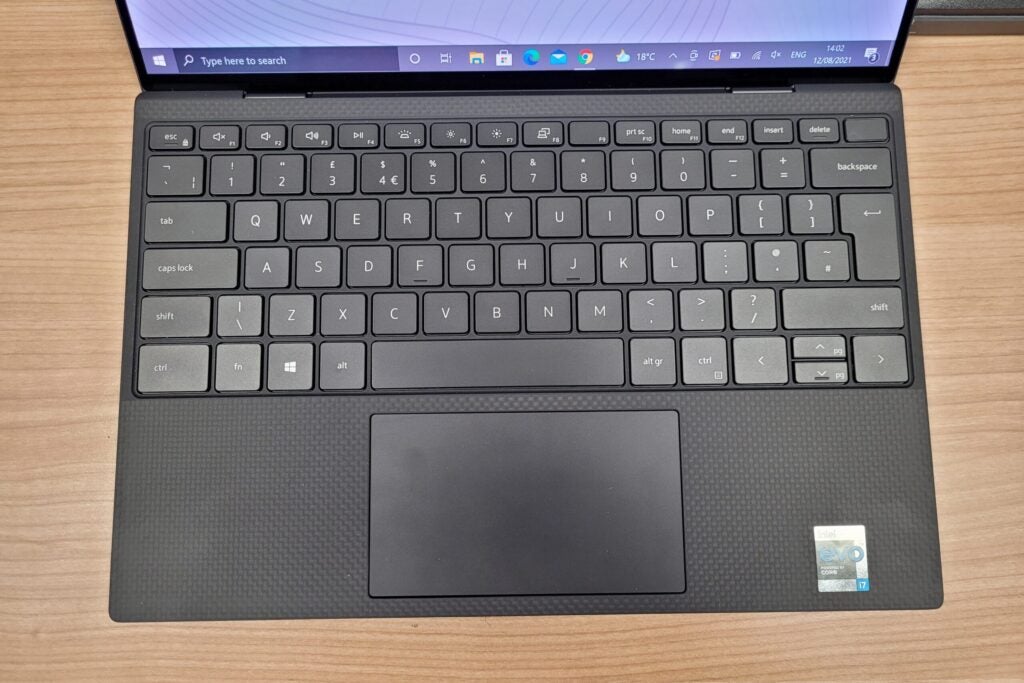
One area Dell sadly didn’t improve upon is the webcam. It’s still stuck at 720p resolution, resulting in a visibly grainy video feed. That said, it’s absolutely fine to use for both casual and professional video calls and it’s a marvel that Dell has even been able to fit it in the top bezel. I’m glad it didn’t copy the Huawei and Honor trick of installing the webcam in the keyboard.
Screen
- OLED is a big upgrade on standard laptop screens
- 3.5K resolution results in a noticeably sharp display
- Top-notch colour accuracy for content creators
As the name suggests, it’s the new OLED panel that separates the Dell XPS 13 OLED from the previous model.
The main benefit of an OLED screen is that every pixel can produce its own light and it can individually turn off pixels to replicate deep black levels. This results in superior contrast and improved colour coverage compared to standard laptop screen technology.
I put my Razer Blade Stealth (with a 1080p LCD panel) next to the Dell XPS 13 OLED and the difference was astounding. While the former does not have a bad screen by any means, it was immediately obvious that the Dell’s picture quality was substantially better.
Watching Netflix’s ‘Our Planet’ nature documentary, I could see that the Dell XPS 13 produced more natural and varied colours, picking up extra detail such as the ripples of the ocean and the amber sunlight peeking over the coastal rocks. In comparison, the ocean and sky lacked depth with the Razer, resulting in a uniform pale blue that makes the scene look washed out.
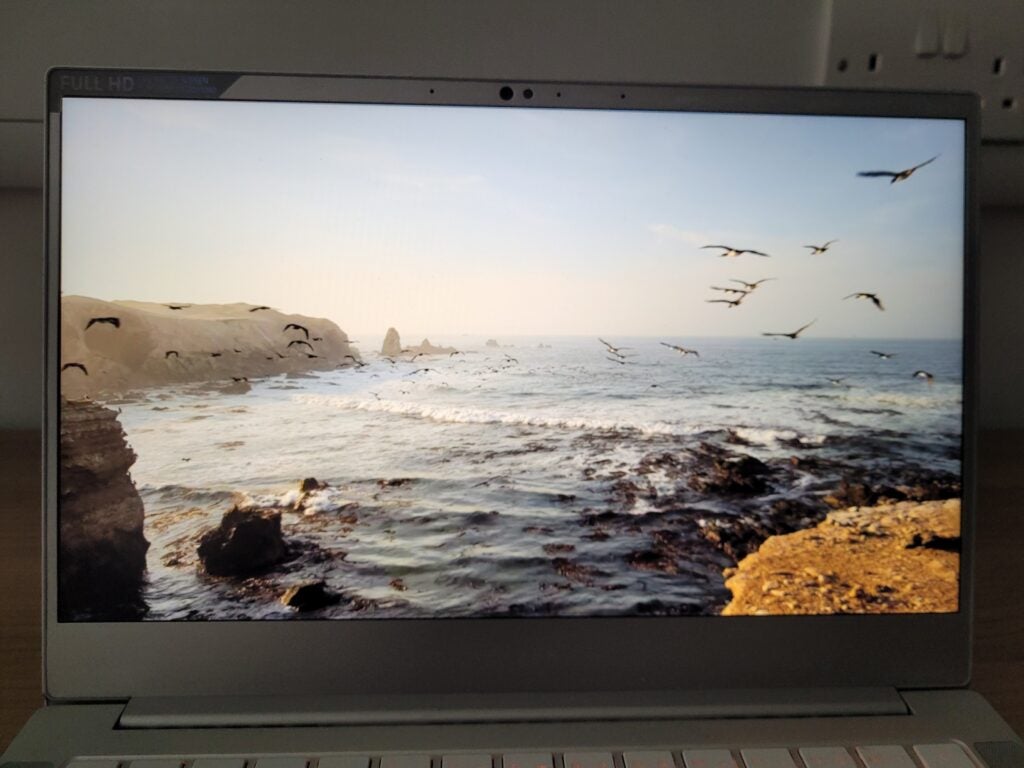
On left: Razer Blade Stealth. On right: Dell XPS 13 OLED
Dell has also cranked the screen up to a 3.5K resolution, which is a significant improvement on standard Full HD panels. I could see the benefits of the extra pixel count in Our Planet, with the Dell presenting the rocky surface of a cliff in far better detail than the Razer. You’ll need to watch 4K videos to make the most out of the sharper display, but the likes of Netflix and Disney Plus have lots on offer these days.
As well as having superb contrast, the Dell XPS 13 OLED features a 392-nit brightness, which is well above the average and ensures you’ll still be able to see the screen in bright conditions.
With all that considered then, I’m confident that the Dell XPS 13 OLED boasts the absolute best 13-inch laptop screen on the market for entertainment purposes. Furthermore, it’s also a fantastic screen for professional-grade work, with our colorimeter recording colour coverage results of 90% for sRGB, 94.7% for Adobe RGB and 97.4% for DCI-P3. This means the screen can produce enough colours to accurately display photos and videos, which is crucial for media professionals.
Performance
- Superb productivity performance
- Integrated GPU is ideal for entry-level creation and gaming
- Lots of configuration options for RAM and storage
The Dell XPS 13 OLED comes with two processor choices: Intel Core i5-1135G7 or Intel Core i7-1185G7. Dell sent me the latter.
These are the exact same chips found with the preceding model of the XPS 13, so don’t expect a performance jump here. But by using Intel’s latest generation of mobile chips for ultrabooks, there isn’t really any room for upgrades unless Dell switched over to AMD.
The performance is competitive with all Windows ultrabooks, seeing some of the best benchmark scores for a 13-inch laptop I’ve seen this year. This means the Dell XPS 13 OLED easily blazes through productivity tasks and even dabbles with more taxing creative duties such as Photoshop and Premiere Pro.
| Dell XPS 13 OLED | Surface Laptop 4 | MacBook Air M1 | |
| Processor | Intel Core i7-1185G7 | Intel Core i5-1135G7 | Apple M1 |
| Geekbench 5 single-core | 1465 | 1307 | 1731 |
| Geekbench 5 multi-core | 5424 | 4844 | 7308 |
| PCMark 10 | 5042 | 4088 | NA |
| 3DMark Time Spy | 1459 | 1493 | NA |
However, the MacBook Air M1 remains the fastest ultrabook with far superior benchmark results compared to the XPS 13 OLED. It would be unfair to criticise Dell for this, but it’s still something to be aware of if high-speed performance is your priority.
The XPS 13 OLED also comes in three RAM flavours – 8GB, 16GB and 32GB – but is restricted to the integrated Xe graphics. This means it can handle entry-level gaming such as Fortnite with low graphics settings, but you’ll want a beefier laptop with a dedicated GPU if you want to play AAA games such as Cyberpunk 2077.
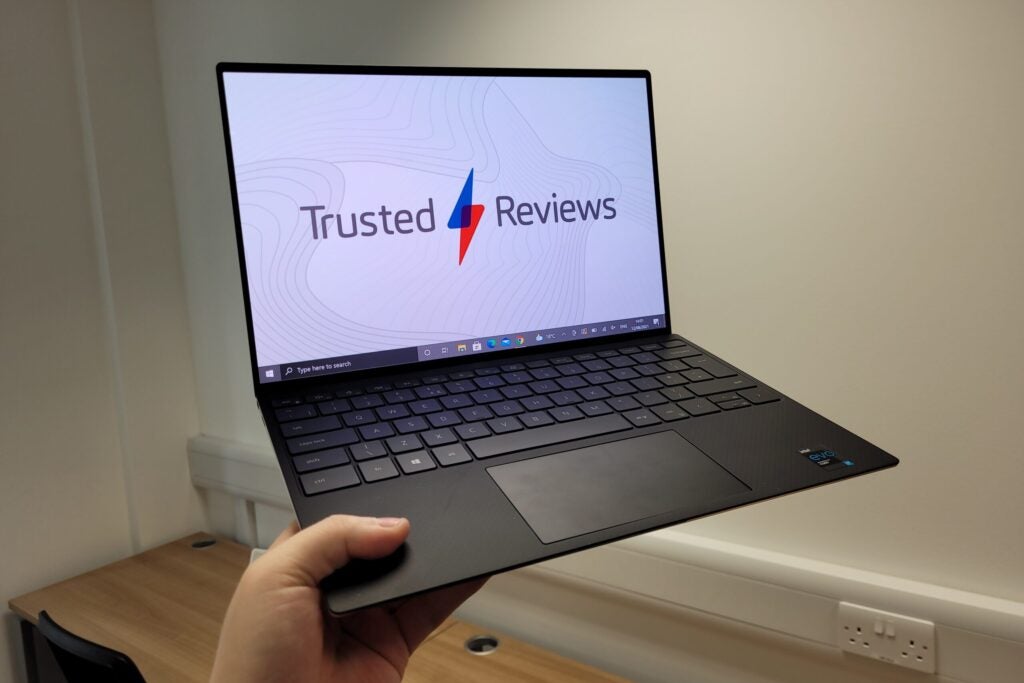
Dell also offers multiple SSD configurations ranging from 256GB to 2TB. I recommend avoiding the base-level option, as you’ll likely find yourself running out of storage space very quickly. Plus, the upgrade to 512GB currently only costs an extra £50, so it’s definitely worth the jump.
I was also pleased to see the Dell score very high benchmark results for the SSD, with a read score of 3181 MB/s and a write score 2982 MB/s. These numbers mean the XPS 13 OLED is one of the fastest ultrabook laptops available for saving and loading data on the drive. This can include anything from transferring videos to an external hard drive to saving your progress in a game.
Battery
- Battery life is a less than ideal 7 hours and 22 minutes
- Power adaptor is compact, with LED indicator
Having a 3.5K resolution and OLED display are undoubtedly big upgrades on standard Full HD laptops, but the jump in picture quality does have a compromise, with the extra pixels causing a greater power drain.
Most modern laptops comfortably surpass the 10-hour mark in our PCMark 10 office battery test, which simulates day-to-day tasks until the cell runs dry. However, the Dell XPS 13 OLED only managed to hit 7 hours and 22 in this test, which is one of the poorer results I’ve seen in 2021.
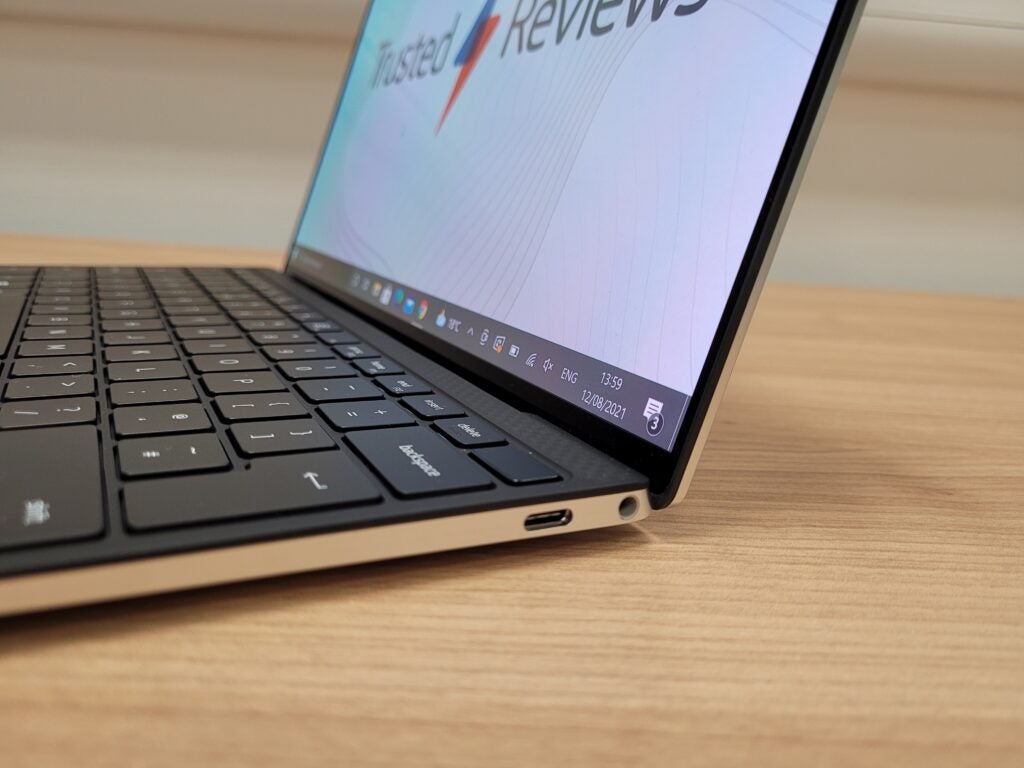
That’s even worse than the 4K Dell XPS 13 (Tiger Lake) model from last year, which lasted 9 hours and 52 minutes in the same test. This means the OLED panel is actually having a negative effect on battery life. OLED technology has been known to improve battery life for some devices since black colours don’t require an active backlight, but that’s sadly not the case here.
That all said, I reckon the 7 hours and 22 minutes battery life is still just about good enough for a laptop, just falling shy of completing a full day of work away from the mains. But if you’re consistently working on the go and need the lengthiest battery life possible, then it’s probably best you look elsewhere.
On the plus side, I’m impressed by how small the power adapter is, making it easy to transport in a bag. The lead even features an LED indicator to let you know whether you’ve remembered to turn on the switch at the plug.
Best Offers
Should you buy it?
You want the absolute best screen quality:
The screen on the Dell XPS 13 OLED is jaw-droppingly good, with incredibly high contrast, near-perfect colours and a 3.5K resolution that adds detail to supported videos. You won’t find a better laptop display for the price.
You want a long battery life:
Unfortunately, that OLED screen has an adverse effect on battery life, shortening it to a concerning 7 hours and 22 minutes. If you’re often working on the go, then it may be worth opting for the Full HD non-OLED model instead.
Final Thoughts
The Dell XPS 13 OLED is the best ultrabook laptop I’ve ever reviewed. It’s not perfect, with a stingy offering of ports and poor battery life, but it’s still miles ahead of the competition in almost every other regard.
How we test
Every laptop we review goes through a series of uniform checks designed to gauge key things including build quality, performance, screen quality and battery life.
Used as our main laptop for the review period
Tested for at least a week
Used consistent benchmarks for fair comparisons with other laptops
Reviewed using respected industry benchmarks and real world use
FAQs
The Dell XPS 13 OLED can handle entry-level games, such as Fortnite and Minecraft with low graphics settings, but it cannot handle AAA games at a reasonable performance.
Yes, the Dell XPS 13 OLED does feature a touchscreen. But it doesn’t have a 2-in-1 form factor.
The Dell XPS 13 OLED does not feature the rectangle USB-A port used with flash drives and peripherals. However, Dell provides a USB-C to USB-A adaptor in the box.




